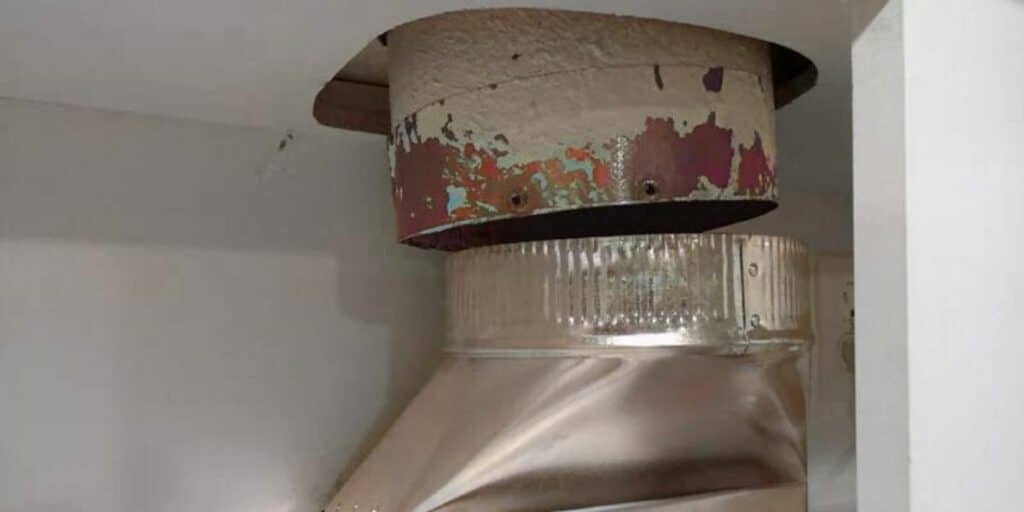To ensure your home’s heating and cooling system operates efficiently, it is crucial to have properly sealed ductwork. In many homes, around 20 percent of the money spent on heating and cooling is wasted because heated or cooled air escapes through leaks in the ductwork. Understanding the importance of well-sealed ducts and taking steps to maintain them can significantly improve your home’s energy efficiency and comfort.
How Does Ductwork Affect HVAC System Performance?
Ductwork is an essential part of your home’s forced-air heating and cooling system. It serves as the conduit through which heated or cooled air travels from the air-handling unit to various rooms in your house. Without ductwork, there would be no way to distribute this conditioned air, rendering your HVAC system ineffective. Properly sealed ductwork ensures that your system can operate at peak efficiency, providing consistent temperatures and comfort throughout your home.
When ductwork is compromised by leaks or poor insulation, the conditioned air escapes into unoccupied spaces such as attics, basements, or crawl spaces. This loss forces your heating and cooling system to work harder to maintain a comfortable temperature in your living areas. As a result, your system consumes more energy, leading to higher utility bills and unnecessary wear and tear on your equipment.
Properly sealed ductwork is critical for maximizing the efficiency of your heating and cooling system. When ducts are sealed correctly, the conditioned air remains within the system, effectively reaching all the intended areas of your home. This not only improves comfort but also reduces the amount of energy needed to maintain desired temperatures, leading to lower utility bills.
Sealing ducts involves applying mastic sealant or metal-backed tape to all seams and connections. This process helps prevent air leaks and ensures that the ducts remain intact and aligned. In some cases, additional insulation may be added to further enhance efficiency, especially in areas where the ducts run through unconditioned spaces.
Professional duct sealing can result in significant energy savings. According to the U.S. Department of Energy, sealing and insulating ducts can improve the efficiency of your heating and cooling system by as much as 20 percent. This means that a small investment in duct sealing can lead to substantial long-term savings on your energy bills.
Common Problems with Ductwork
Several factors can contribute to inefficient ductwork. Ducts that are not properly installed, have become damaged, or have disconnected due to the settling of your home are common culprits. Additionally, the tape that seals sections of ducts together can dry out and fall off over time. In older homes, ducts were often installed without proper insulation, exacerbating the problem.
Crushed flexible ducts, damaged sealing tape, and misaligned ducts are specific issues that can lead to air leakage. These problems not only reduce the efficiency of your HVAC system but can also cause uneven heating and cooling throughout your home. For instance, one room might be too warm while another remains too cold, making it difficult to maintain a consistent and comfortable indoor environment.

Addressing these issues typically involves a thorough inspection by trained technicians who can identify and repair any problems with your ducts. They will look for signs of damage, misalignment, and inadequate insulation, ensuring that your ductwork is in optimal condition.
Benefits of Properly Sealed Ductwork
One of the primary advantages of properly sealed ductwork is improved indoor air quality. Leaky ducts can allow dust, dirt, and other contaminants to enter the system and circulate throughout your home. This can exacerbate allergies and respiratory issues, particularly for individuals with sensitivities. By sealing your ducts, you can reduce the amount of pollutants entering your home and improve the overall air quality.
Another significant benefit is enhanced comfort. With sealed ducts, the air distribution is evener, eliminating hot and cold spots in your home. This consistent temperature control ensures that every room remains comfortable, regardless of the weather outside. Additionally, a more efficient system reduces the strain on your HVAC equipment, potentially extending its lifespan and reducing the need for costly repairs.
Finally, properly sealed ductwork can have environmental benefits. By reducing the amount of energy your home consumes, you are lowering your carbon footprint. Energy efficiency is a crucial aspect of sustainable living, and taking steps to improve your ductwork is a positive contribution to environmental conservation.
Regular inspection and maintenance of your ductwork are essential for ensuring long-term efficiency and performance. A simple inspection by trained technicians can quickly and easily identify any problems with your ducts. They will look for crushed flexible ducts, damaged sealing tape, misaligned ducts, and inadequately insulated ducts.
During an inspection, technicians may use specialized tools such as duct blasters and infrared cameras to detect leaks and assess the condition of your ductwork. These tools help pinpoint areas where air is escaping and determine the effectiveness of existing insulation. Based on their findings, technicians can recommend appropriate repairs or upgrades to improve your system’s efficiency.
In addition to sealing and insulating ducts, regular maintenance of your HVAC system is crucial. This includes changing air filters, cleaning coils, and checking for any signs of wear and tear. By keeping your system well-maintained, you can prevent small issues from becoming major problems and ensure that your ductwork remains in good condition.
The Cost of Duct Sealing
One of the concerns homeowners often have about duct sealing is the cost. However, the investment in properly sealed ductwork is relatively modest compared to the potential savings on energy bills. Repairs to ensure properly sealed ductwork typically aren’t very expensive, but they can save a significant amount on your monthly energy bills.
The cost of duct sealing varies depending on the size of your home, the extent of the repairs needed, and the rates charged by HVAC contractors in your area. On average, homeowners can expect to pay between $1,000 and $3,000 for professional duct sealing. While this may seem like a significant expense, the energy savings and improved comfort can quickly offset the initial cost.
Moreover, many utility companies and government programs offer rebates and incentives for energy efficiency improvements, including duct sealing. These programs can help reduce the upfront cost and make duct sealing a more affordable option for homeowners. It’s worth checking with your local utility company to see if any rebates or incentives are available in your area.
Finding a Reliable Contractor
Finding a reliable contractor to inspect and seal your ductwork is crucial for ensuring that the job is done correctly. Look for contractors who are certified by reputable organizations such as the Air Conditioning Contractors of America (ACCA) or the North American Technician Excellence (NATE). Certification indicates that the contractor has the necessary training and expertise to perform high-quality work.
When selecting a contractor, it’s also important to ask for references and read reviews from previous customers. A reputable contractor should have a track record of satisfied clients and positive feedback. Additionally, make sure the contractor provides a detailed estimate of the work to be done, including the cost and scope of the project.
Once you’ve chosen a contractor, schedule a comprehensive inspection of your ductwork. The contractor should provide a thorough assessment of your system’s condition and recommend any necessary repairs or upgrades. Be sure to ask questions and understand the proposed solutions before proceeding with the work.
Investing in properly sealed ductwork offers long-term benefits that extend beyond immediate energy savings. By improving the efficiency of your heating and cooling system, you can reduce your overall energy consumption and lower your utility bills. Over time, these savings can add up to a substantial amount, making the initial investment in duct sealing well worth it.
In addition to financial savings, properly sealed ductwork contributes to a more comfortable and healthier living environment. Consistent temperatures, improved air quality, and reduced noise from your HVAC system all enhance the overall comfort of your home. This can lead to a better quality of life for you and your family.
Furthermore, energy efficiency improvements such as duct sealing can increase the value of your home. Potential buyers are often looking for homes with modern, energy-efficient systems that offer lower operating costs. By investing in duct sealing, you can make your home more attractive to buyers and potentially increase its resale value.
Investing in duct sealing is a smart decision that offers long-term benefits for both your home and the environment. Regular inspection and maintenance by professional technicians ensure that your ductwork remains in optimal condition, providing efficient and reliable performance year-round. Don’t let leaky ducts compromise your home’s comfort and efficiency. Take proactive steps to seal and insulate your ductwork, and enjoy the many advantages of a well-maintained HVAC system.






